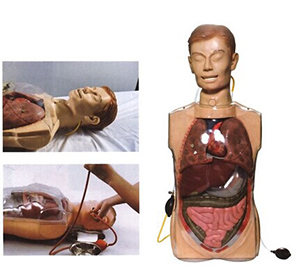Homepageпјҡ NEWS >> Can a multifunctional gastric lavage model reduce medical errors in simulation training?
In the medical field, gastric lavage is a common first aid procedure, especially in emergency situations dealing with drug poisoning or food poisoning. How to ensure the accuracy and efficiency of this process is the key to improve the treatment effect. The multi-functional gastric lavage model, as a simulation training tool, is gradually being widely used in clinical education and first aid training to help reduce medical errors and improve the safety and accuracy of the operation.
1. Help medical personnel master the correct operation procedure
The multifunctional gastric lavage model provides a highly restorative gastric lavage environment that allows participants to simulate the entire process of gastric lavage without risk. Through repeated operations, students are able to familiarize themselves with the various steps, including proper tube insertion, fluid flow control, and patient position adjustment. The study showed that health care workers who underwent simulation training were more likely to avoid common errors in practice, such as catheter misplacement and fluid leakage. The data analysis showed that the error rate of first responders trained with the model was reduced by about 25% in actual operations.

Multifunctional gastric lavage model
2. Improve clinical decision-making ability
In emergency situations, gastric lavage procedures require quick and accurate decision making. By using a multifunctional gastric lavage model, doctors and nurses are able to practice in a simulated environment how to adjust the gastric lavage protocol (such as using different drugs or fluids) to the different conditions of the patient, thereby improving their clinical judgment and emergency response ability. Industry experts point out that simulation training can help reduce errors of judgment caused by nervousness or inexperience, which in turn reduces the incidence of medical errors.
3. Reduce patient harm
Improper operation of gastric lavage may lead to accidental injury of patients, such as gastric perforation, accidental inhalation and other serious consequences. Training with the multifunctional gastric lavage model can help the medical staff to accurately master the operation skills and ensure that patients avoid unnecessary injuries when receiving treatment. The data showed that emergency department physicians who implemented simulation training had a 30% reduction in patient injury rates compared to untrained physicians.
4. Promote personal and professional growth
For medical personnel, simulation training is not only a way to improve professional skills, but also an important step in personal career development. By repeatedly operating the gastric lavage model, medical staff can gradually accumulate experience and improve their operational proficiency and strain capacity. This growth has a long-term impact on improving patient outcomes and reducing medical errors.
5. Improve teamwork
In emergency care, gastric lavage often requires close collaboration with a team of medical staff. The multi-function gastric lavage model can also simulate the situation of teamwork, helping professionals to communicate and cooperate effectively under pressure. This training ensures that in high-pressure environments, members can complete tasks quickly and accurately, further reducing operational errors.
Overall, simulation training using the multifunctional gastric lavage model effectively reduces medical errors and significantly improves the safety and effectiveness of medical procedures by improving operational accuracy, enhancing clinical decision-making, and promoting individual and team growth. With the continuous development of medical technology and training means, simulation training will become a key tool to reduce medical errors and improve the quality of medical services.